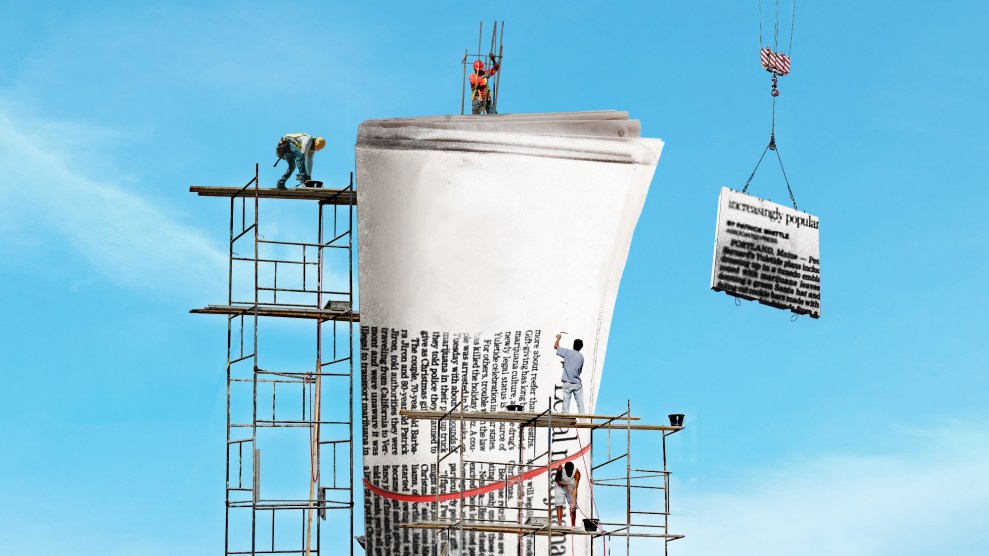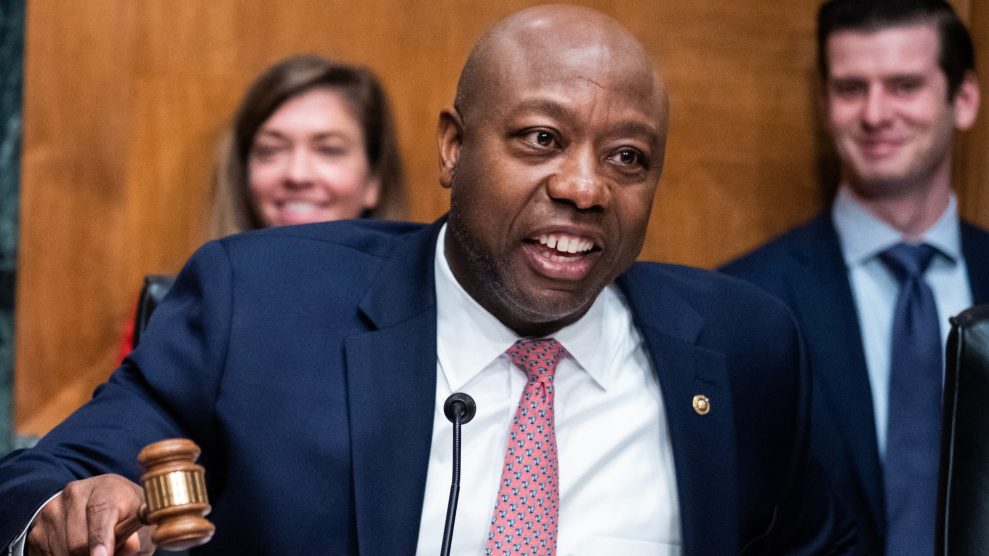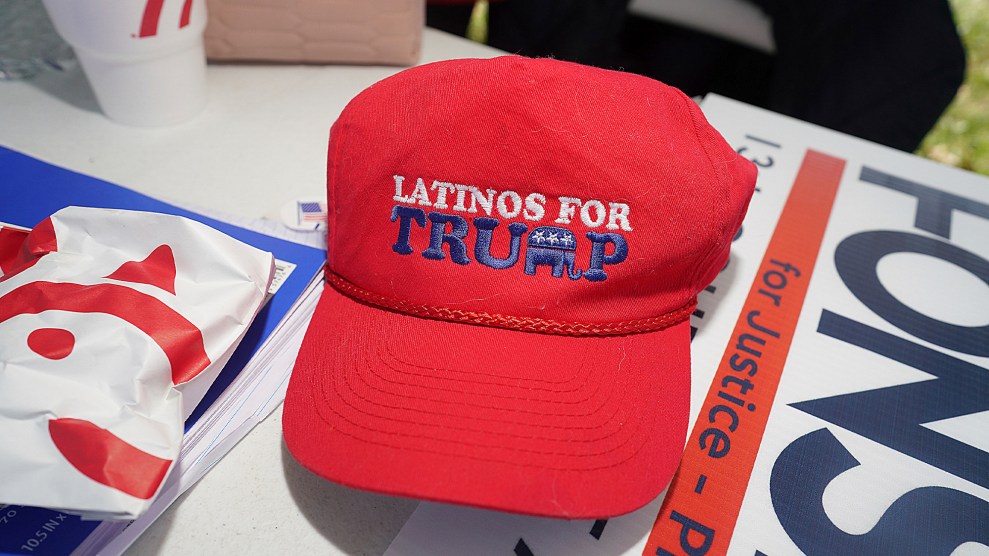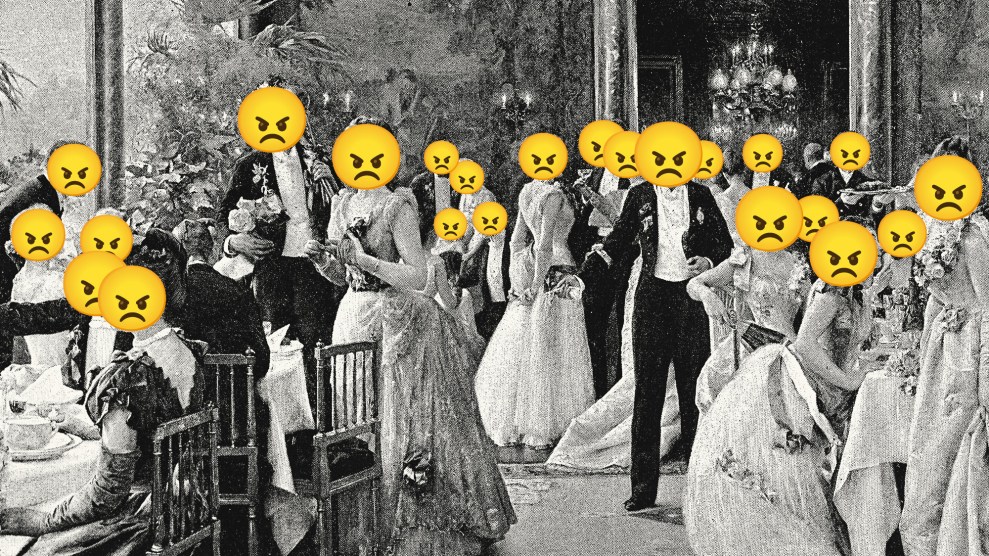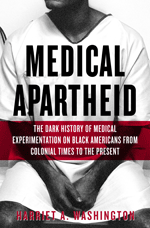
Medical Apartheid: The Dark History of Medical Experimentation on Black Americans From Colonial Times to the Present
By Harriet A. Washington. Doubleday. $27.95.
In this provocatively titled book, Harriet Washington argues that the infamous “Tuskegee Experiment”—the 40-year study in which black men with syphilis were allowed to die untreated so that their cadavers could be used for research—was not an isolated incident, but rather one example of the medical establishment’s long history of mistreating African Americans. Compelling, if at times gruesome, Medical Apartheid draws a connection between past medical experiments and the woeful current state of health care for blacks.
Medical Apartheid is peppered with chilling anecdotes of racist exploitation, curiosity, and control. There is the story of John Brown, a slave purchased in Georgia in the 1820s, whose owner, a doctor, blistered his legs and arms on a daily basis to see how deep his black skin went. Far from merely cataloging horrors, Washington, a journalist and former fellow in ethics at Harvard Medical School, also illustrates what she calls the “dual face” of these abuses, pointing out that the exploitation of black subjects made numerous medical advances possible. For example, Dr. Marion Sims, a 19th-century gynecological pioneer, was only able to achieve his breakthroughs by performing horrific surgeries without anesthesia on his female slaves.
These tales are not limited to the less enlightened past. The forced sterilization of black women (what civil rights activist Fannie Lou Hamer plaintively called her “Mississippi appendectomy”) got its start during slavery, but has persisted in less overt forms in recent years. A 1991 experiment that implanted the now-defunct birth control device Norplant into African American teenagers in Baltimore was applauded by some observers as a way to “reduce the underclass.” Washington also finds that racist assumptions still creep into high-level medical research. A 1992 Columbia University study looking for a genetic link to violent behavior only recruited young black boys from poor neighborhoods in New York City. Researchers misled the parents, claiming their children were simply coming in for a series of tests and questions, when in fact they were given potentially risky doses of the same drug found in the Fen-Pfen weight loss pill.
One of the most harmful contemporary legacies of this history of abusive medical experimentation is that many African Americans are wary of participating in potentially life saving medical studies. A recent study in the American Journal of Law and Medicine estimated that only 1 percent of the nearly 20 million Americans enrolled in biomedical studies are black. This reluctance, though justified, has meant that blacks often miss out on the latest treatments and breakthroughs. In the 1980s, for instance, virtually no African Americans were used in trials of the HIV inhibitor AZT. When the drug came into widespread use in 1991, the Food and Drug Administration had scant research on blacks and erroneously reported that it was not effective for black patients. If more blacks had been included in the original studies, Washington wonders, “would the number of HIV-infected African Americans be lower today?”
Washington’s book is a rallying call for change within the medical and African American communities. While doctors must understand their black patients’ fears of exploitation, African Americans, Washington writes, “cannot afford passivity.” Increased participation in ethically designed medical studies would not only be a boon to African Americans suffering from serious diseases but would also lead to better preventive care in general. As she concludes, “Physicians, patients, and ethicists must…understand that acknowledging abuse and encouraging African Americans to participate in medical research are compatible goals.”

